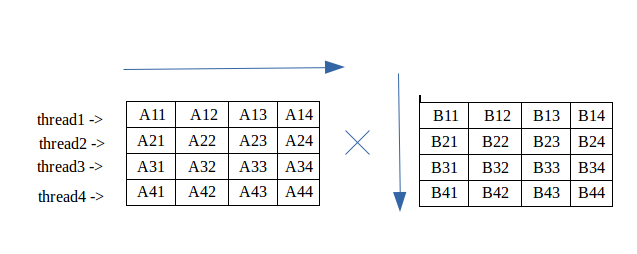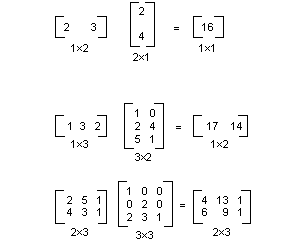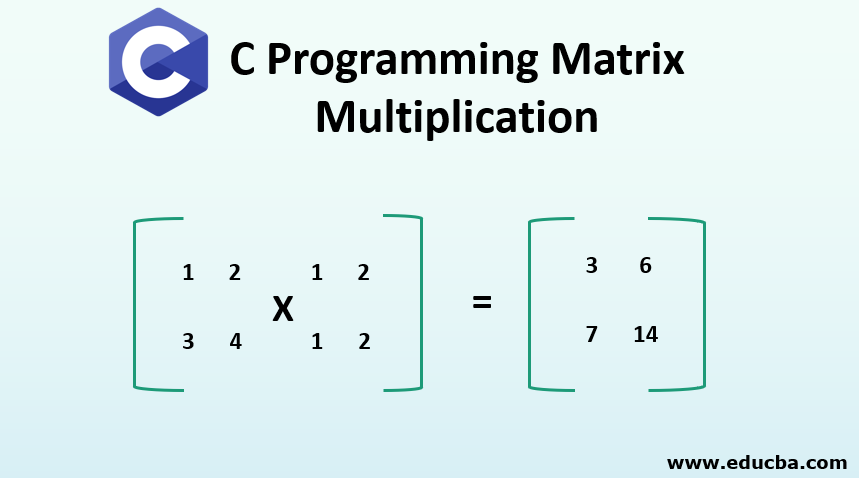Multiply Two Rotation Matrices
That is rotations are done from right to left. Create a 4 element vector where each element is a sampling.
Do I use the post multiply or pre multiply.
Multiply two rotation matrices. The correct order is R m u l t R i n. You end up in the same place either way. I know that both T1 and T2 needs to be multiplied by a rotational matrix but I dont know how to multiply the rotational matrix.
You can multiply two matrices if and only if the number of columns in the first matrix equals the number of rows in the second matrix. It is a reflection across the line 11 y 2 x. 0 R 2 1 2sinsin2 cos2 1 0 Because rotations are actually matrices and because function compositionfor matrices is matrix multiplication well often multiply rotation functionssuch asRR to mean that we are composing them.
Since from what I read that post multiply is used when the moving coordinate is rotated with the reference of its own coordinate and pre multiply is used when the moving. In the same way that the order of rotations are important the order of matrix multiplication is important. You can use a 3x3 matrix as a rotation either by computing row matrix or matrix column and the order in which you have to multiply two matrices changes depending on what convention you are using.
We know from thinking about it that when doing rotations of the plane it doesnt matter whether you first rotate by 30 then by 60 or if you rotate by 60 then 30. This gives 90 degree rotation about y axis first 2 lines cancel out. This single value becomes the entry in the first row first column of matrix C.
The angle sum formulae for sine and cosine can be derived this way. Yes just multiply them in reverse order. If we want to express the c frame in s coordinates instead of b coordinates we can perform the matrix multiplication R_sc equals R_sb times R_bc.
Angle of Rotation 90 180 270 Rotation Matrix Multiply on the left 0 1 1 0 1 0 0 1 0 1 1 0. Multiplying two quaternions will give a 3rd quaternion which put back into matrix form is the exact composition of both input matrix. I let pt shapeptsi let x a pt0 b pt1 let y c pt0 d pt1 newPtspush x.
Please see Martin Büttner detailed answer. This is also known as the dot product. Matrix myrotation MatrixCreateRotationXxrot MatrixCreateRotationZzrot.
Successive rotations can be calculated by multiplying together the matrices representing the individual rotations. That is post-multiplying the rotation R A O by the rotation R O B is given by the matrix R. To rotate counterclockwise about the origin multiply the vertex matrix by the given matrix.
As a result of multiplication you will get a new matrix that has the same quantity of rows as the 1st one has and the same quantity of columns as the 2nd one. Quaternions have very useful properties. In this lecture I show how to derive a matrix that rotates vectors between 2 different reference frames.
1 0 0 0 0 1 0 1 0 x y z and so really your post-multiplication operation is given by 2 rather than 1. By premultiplying R_bc by R_sb weve changed the representation of the c frame from the b frame to the s frame as we can verify by inspecting the rotation matrices. For let i 0.
Multiplication of rotation matrices is homomorphic to multiplication of quaternions and multiplication by a unit quaternion rotates the unit sphere. This rotation matrix is in the Special Orthogonal g. I would recommend expressing your rotation matrix as quaternions.
Rotated 90 from where you started. To rotate twice just multiply two rotation matrices together. The 22 rotation matrix corresponds to a 90 planar rotation.
Since the homomorphism is a local isometry we immediately conclude that to produce a uniform distribution on SO3 we may use a uniform distribution on S 3. Link on columns vs rows In the picture above the matrices can be multiplied since the number of columns in the 1st one matrix A equals the number of rows in the 2 nd matrix B. The main condition of matrix multiplication is that the number of columns of the 1st matrix must equal to the number of rows of the 2nd one.
The 33 rotation matrix. Another method uses unit quaternions. The product of these two matrices lets call it C is found by multiplying the entries in the first row of column A by the entries in the first column of B and summing them together.
The transpose of the 22 matrix is its inverse but since its determinant is 1 this is not a rotation matrix. Thus we can writeTheorem 14 asRRR. And we loop through those points making new points using the 22 matrix abcd.
For two rotations R 1 R 2 the product R 1 R 2 is the matrix corresponding to the rotation obtained by first applying R 2 then applying R 1. Similarly you can apply a rotation expressed as a quaternion by computing either q v conjq or conjq v q and the order changes. My answer only applies if you are using column vectors.
Quaternions have very useful properties. The 33 rotation matrix corresponds to a 30 rotation around the x axis in three-dimensional space. That is the rotation matrix R A O operates on the vector x y z by.

How To Find The Rotation Matrices For Robotic Arms Automatic Addison

Matrix Vector And Matrix Matrix Multiplication Youtube

How To Multiply A Given Matrix By Its Transpose Stack Overflow

Concatenating Translation And Rotation Matrix What Am I Doing Wrong Mathematics Stack Exchange

Matrix Multiplication In C Applying Transformations To Images

Multiplication Of Matrix Using Threads Geeksforgeeks

Matrix Representation Of Transformations Win32 Apps Microsoft Docs
Matrix Multiplication Calculator
Https Kth Instructure Com Courses 3886 Files 566238 Download Verifier Ujksluwiy2vboh0no5vyabwvuyuyuolfxpgwb9be Wrap 1

Applicaton Of Matrix Multiplication Transformations Youtube

Matrix Representation Of Transformations Win32 Apps Microsoft Docs

Multiplication Order Of Rotation Matrices Mathematics Stack Exchange

C Programming Matrix Multiplication C Program For Matrix Manipulation

Matrix Representation Of Transformations Win32 Apps Microsoft Docs

